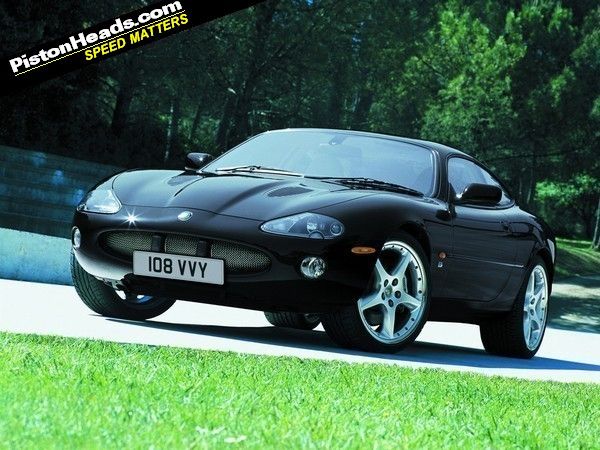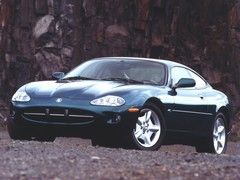PH Buying Guide: Jaguar XK8/XKR (X100)
Jaguar's curvy XJS replacement is now available for reasonable money. Here's our guide to buying the big cat

Launched at the 1996 Geneva Motor Show, the X100 XK8 used a modified XJS platform as its base, but an all-new 4.0-litre V8 engine provided the power. The AJ-26 V8 gave 294hp and was only ever offered with a five-speed automatic gearbox.
A Convertible followed at the end of 1996, followed by the supercharged XKR with 375hp in 1998. The XKR arguably finally laid to rest the calls for a spiritual replacement for the E-Type.
Search for Jaguar XK8/XKRs here
Some concerns arose, however, over the new V8’s reliability, mostly due to the Nikasil lining of the cylinder bores that was susceptible to wear from petrol with a high sulphur content. The Nikasil-lined engines were replaced in 2000 with steel-lined AJ26 motors that were unaffected by sulphur. Many earlier XKs had their engines replaced under warranty by Jaguar, so look for evidence of this in the history file or inside the engine bay where there should be an identifying plaque.
Any further worries about engine problems were dismissed in 2003 when Jag introduced the revised 305hp AJ-34 4.2-litre V8, again with steel-lined bores. A revised 4.2-litre supercharged engine, now with 406hp, arrived at the same time as the normally aspirated engine, and both got a new, six-speed automatic gearbox.
By the time Jaguar wound up production of the first generation X100 XK8 in 2005 to replace it with the X150, 91,406 worldwide were built. Several special edition models were produced, including the Silverstone in 2000, XKR 100 in 2001, Carbon Fibre in 2004, Portfolio for the US market, and to mark the end of X100 production there was the S model for Europe and Victory for the USA.
Now, you can pick up an X100 XK8 for less than £3000. At this price, it will be a reliability gamble, so better early cars are more likely cost from £5000 and convertibles generally command £1500-£2000 more. The XKR starts at £5000, while facelifted models from 2001-on are likely to begin at £8000 for the normally aspirated coupe and rise to a peak of £20,000 for a late XKR convertible.
PHer's view:
"I had an XK8 and then an XKR100. Both were beautiful, incredibly reliable (temp gauge seemed to be stuck in the dead centre of the gauge), if not the most involving of driver's cars. I loved the looks and the reliability, but I'm not a fan of the auto ’box and think the car would have been far better with a manual, even if that had only been a flappy paddle job. Straight-line speed of the R was immense, although it felt like a heavier beast through the twisty stuff. Servicing costs and depreciation were high for a car of this value. All in all, a good experience and I did go back for more!"
Gavin Moule
Buying guide contents:
Introduction
Powertrain
Rolling chassis
Body
Interior
Search for Jaguar XK8/XKRs here
Except for that silver cabriolet monstrosity above, the bling wheels and bonnet vents look terrible.
To anyone interested in one of these, I'd highly recommend looking at a MKIV Toyota Supra, which is a nicer drive and available in manual form. The issue is finding an unmolested one, and rising above badge snobbery.
When the next generation XK is getting this cheap (£15K!) an XK8 might be a hard sell. Pretty car though.
I would love a Jaguar but not with a boring automatic or even paddle shift box.
Pip
 Manual gearbox , no problem , NormanD will be along soon along with the after market option and of twin screw supercharger to boost power to 600 BHP. Specialist sites such as the xkec and a wealth of Jaguar specialists mean servicing and running is not ruinous. Buying guide; there are plenty available and with all cars much to look for. Nikasil issues are long gone with surviving cars likely to last longer than steel lined thanks to the lower friction and age hardening. Worth mentioning the biggest issues are often battery/power related. Ignore Jaguar's over optimistic servicing schedules and change the gearbox fluids.
Manual gearbox , no problem , NormanD will be along soon along with the after market option and of twin screw supercharger to boost power to 600 BHP. Specialist sites such as the xkec and a wealth of Jaguar specialists mean servicing and running is not ruinous. Buying guide; there are plenty available and with all cars much to look for. Nikasil issues are long gone with surviving cars likely to last longer than steel lined thanks to the lower friction and age hardening. Worth mentioning the biggest issues are often battery/power related. Ignore Jaguar's over optimistic servicing schedules and change the gearbox fluids. The first one was retired at 160,000 miles, current one now up to 65,000. Depreciation from these purchase price levels is lower than a new Focus or Golf, and I know which I'd rather drive.
Reliable, fast beautiful and comfortable, I'm 6'2" and here's more than enough room for me. Yes it's a bit soft, but very easy to live with, and once you know the car and trust it, can be hustled around the twisty bits just as fast as I could my Chimeara, and far better than the Mercedes 320E W124 Coupes I used to run. Straight line acceleration, with 400bhp, and smooth auto is just so strong and will see off almost anything less than £50K plus. What's not to like?
I'll be looking for a new shape one later this year. Great BRITISH made cars.
 Manual gearbox , no problem , NormanD will be along soon along with the option of twin screw supercharger to boost power to 600 BHP. Specialist sites such as the xkec and a wealth of Jaguar specialists mean servicing and running is not ruinous. Buying guide there are plenty available and with all cars much to look for. Nikasil issues are long gone with surviving cars likely to last longer than steel lined thanks to the lower friction and age hardening. Nice idea but 3 out of 10 for implementation.
Manual gearbox , no problem , NormanD will be along soon along with the option of twin screw supercharger to boost power to 600 BHP. Specialist sites such as the xkec and a wealth of Jaguar specialists mean servicing and running is not ruinous. Buying guide there are plenty available and with all cars much to look for. Nikasil issues are long gone with surviving cars likely to last longer than steel lined thanks to the lower friction and age hardening. Nice idea but 3 out of 10 for implementation.The power figures quoted are all in hp, not bhp, as they are across PistonHeads - so they are correct.
The suspension bush issues are discussed in the 'Rolling Chassis' section, as quoted here: "Jaguar made much of checking the front suspension beam with X-ray machines before it was fitted at the factory. However, this doesn’t mean you shouldn’t inspect it very closely for signs of worn bushes, especially the rear ones. If the car’s handling seems to float and doesn't give much confidence, this is a likely culprit" and, later, "An A-frame forms part of the rear suspension and its bushes wear, so listen for knocks and clonks".
Manual gearboxes and twin-screw superchargers are aftermarket modifications, which as a rule we don't touch on in buyers' guides unless they're frequent conversions.
Servicing and running costs do depend on your point of view; I myself ran an XJR with similar running costs a few years ago and found them to be pretty hefty, even through a specialist.
And as regards the Nikasil issues, if you visit the 'Powertrain' section you'll see that Alisdair makes the point that "any Nikasil engine that has lasted until now is unlikely to suffer any problems in this area as modern fuel has a much lower sulphur content."
Gassing Station | General Gassing | Top of Page | What's New | My Stuff







